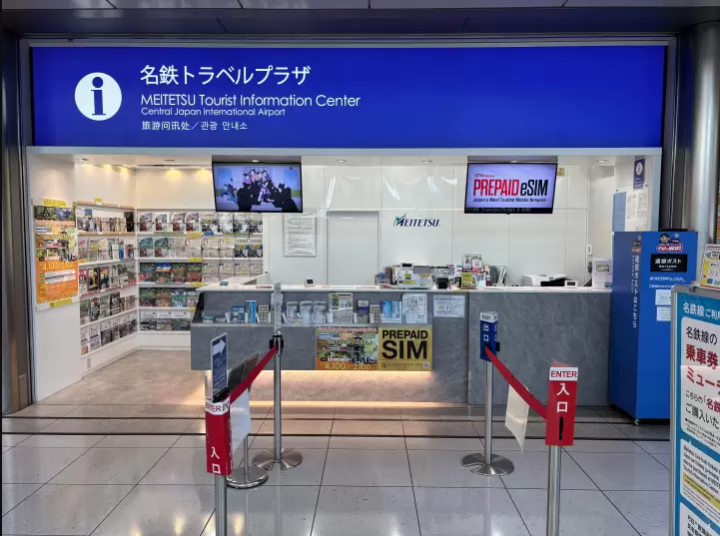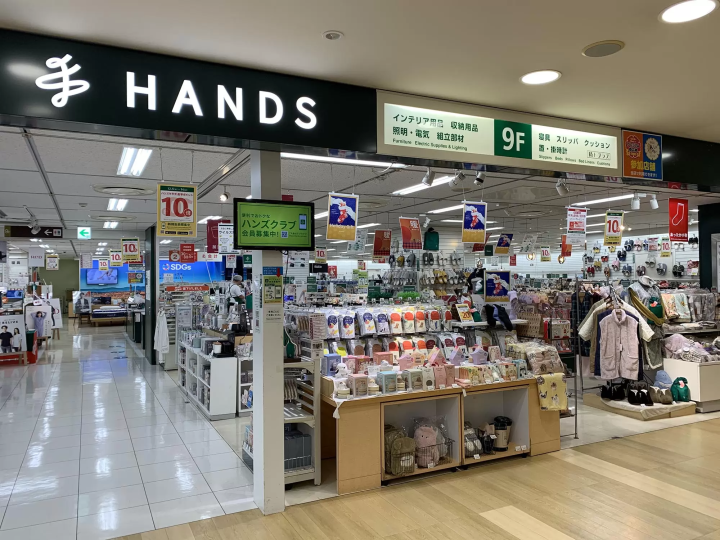[Ayabe City, Kyoto Prefecture] 70 minutes by train from Kyoto! A town with delicious Japanese fast food, onigiri
![[Ayabe City, Kyoto Prefecture] 70 minutes by train from Kyoto! A town with delicious Japanese fast food, onigiri](https://resources.matcha-jp.com/resize/720x2000/2024/10/15-202686.webp)
Among the globally popular Japanese foods, onigiri is the simplest dish. Onigiri is the most commonly eaten fast food for Japanese people and is also sold at convenience stores. Onigiri allows you to directly taste the deliciousness of Japanese rice. In Ayabe City, located in the central part of Kyoto Prefecture, you can taste onigiri made from rice grown in Ayabe City at various stores, and there are also lodgings where you can experience making onigiri.
-
Table of Contents
- The Satoyama landscape of Ayabe City, Kyoto Prefecture, just 70 minutes from Kyoto
- Why onigiri is popular among Japanese people (traditional Japanese fast food)
- The reason why Ayabe rice is so delicious
- Why is Ayabe Musubi so delicious?
- Top 5 sightseeing spots in Ayabe City
The Satoyama landscape of Ayabe City, Kyoto Prefecture, just 70 minutes from Kyoto
Ayabe City, located almost in the center of Kyoto Prefecture, can be reached in about 70 minutes by express train from JR Kyoto Station to Ayabe Station.
The area around Ayabe Station is home to the headquarters of Gunze Co., Ltd., which has supported Japan's silk industry, and Ayabe Gunze Square is home to the Gunze Museum, which tells the history of Gunze. There is also a rose garden and shops selling local specialties, making it a tourist spot that represents Ayabe.
![[Ayabe City, Kyoto Prefecture] 70 minutes by train from Kyoto! A town with delicious Japanese fast food, onigiri](https://resources.matcha-jp.com/resize/720x2000/2024/10/15-202691.webp)
If you go a little way from the center, you can see beautiful natural environments and rich rural landscapes. Typical Japanese rural life is practiced here, and various agricultural products such as rice, vegetables, tea, and chestnuts are produced.
![[Ayabe City, Kyoto Prefecture] 70 minutes by train from Kyoto! A town with delicious Japanese fast food, onigiri](https://resources.matcha-jp.com/resize/720x2000/2024/10/15-202692.webp)
Access by train from Kyoto Station to Ayabe City
It takes about 70 minutes from JR Kyoto Station to Ayabe Station on the Kinosaki or Hashidate Limited Express trains.
From JR Osaka Station, take the special rapid train to JR Kyoto Station, then transfer to the Sanin Main Line and board the limited express.
Access to Ayabe City by car
From the Kyoto area, take the Kyoto Jukan Expressway from Kutsukake IC to Tamba Wachi IC and then take National Route 27. The journey takes about 1 hour and 20 minutes.
From Osaka, take the Chugoku Expressway at Yoshikawa JCT, then the Maizuru-Wakasa Expressway and get off at Ayabe IC. The journey takes about 1 hour and 40 minutes.
Why onigiri is popular among Japanese people (traditional Japanese fast food)
"Onigiri" is a Japanese rice ball. "Onigiri" means "made by squeezing" in Japanese. Therefore, it is also called "omusubi" or "nigirimeshi".
Onigiri is made using the simplest of cooking methods, making it the perfect dish to enjoy the delicious rice of Japan. The basic seasoning is salt, which is sprinkled on wet hands and then the freshly cooked rice is pressed into a ball. Some onigiri are round, others triangular or rectangular. Onigiri made with only salt are called "shio musubi" (salt-based rice balls), and allow you to enjoy the sweetness of the rice the most.
In some cases, ingredients such as pickled plums or kelp are added to the rice, and nori seaweed is wrapped around the rice balls. Typical ingredients include salmon, mentaiko, and bonito flakes. There are also other variations, such as meat.
Onigiri can be made quickly with just rice, and has long been enjoyed by everyone as a fast food that can fill you up when you're just a little hungry.
Japanese people have been eating onigiri (rice balls) made by their mothers since childhood. The taste of onigiri made by a mother is special to everyone, and it can be said to be soul food for the Japanese.
![[Ayabe City, Kyoto Prefecture] 70 minutes by train from Kyoto! A town with delicious Japanese fast food, onigiri](https://resources.matcha-jp.com/resize/720x2000/2024/10/15-202694.webp)
The reason why Ayabe rice is so delicious
Ayabe City has been a major rice farming area for a long time, and has the perfect environment for growing delicious rice. Clean rivers run through the city, the air is clear, and the fertile soil is perfect for growing delicious rice.
In addition, the temperature difference between morning and evening in this region is extreme, and this climate is also a factor in producing delicious rice.
And because Ayabe's farmers put so much care into growing it, the rice is second to none in terms of taste.
If you want to eat delicious rice, the best way is to make it into an onigiri! Not only the rice, ingredients, and how it is made, but also the place where you eat it, the scenery, the faces of the people around the table, and other elements all come together to create a story of a once-in-a-lifetime encounter in an onigiri.
![[Ayabe City, Kyoto Prefecture] 70 minutes by train from Kyoto! A town with delicious Japanese fast food, onigiri](https://resources.matcha-jp.com/resize/720x2000/2024/10/15-202695.webp)
Why is Ayabe Musubi so delicious?
"Ayabe musubi" are rice balls made with rice grown in Ayabe and lovingly formed by chefs in Ayabe, and can be enjoyed at a variety of restaurants.
Each store has different ingredients, and you can enjoy "Ayabe Musubi" made with seasonal ingredients. You can enjoy traditional Japanese "onigiri" that is a little different from the "onigiri" you can find at convenience stores. Chefs who are familiar with the climate of Ayabe select ingredients that match the season and prepare each one with their skills.
Rice is harvested from late August to September, so autumn is also the season to eat new rice. New rice is fresh, so it has a different shine, flavor, and aroma, making autumn the most delicious time of year. Most Japanese people look forward to new rice, so we highly recommend eating it at this time of year.
For those who are not satisfied with just eating, you can also experience making your own "onigiri". Why not try comparing different "onigiri" in search of new encounters through "Ayabe Musubi"?
![[Ayabe City, Kyoto Prefecture] 70 minutes by train from Kyoto! A town with delicious Japanese fast food, onigiri](https://resources.matcha-jp.com/resize/720x2000/2024/10/15-202697.webp)
Restaurants where you can eat Ayabe Musubi
Ayabe Musubi is served at Japanese restaurants, izakayas, and other restaurants in Ayabe City. You can enjoy onigiri with unique features from each restaurant, such as onigiri made with local ingredients.
![[Ayabe City, Kyoto Prefecture] 70 minutes by train from Kyoto! A town with delicious Japanese fast food, onigiri](https://resources.matcha-jp.com/resize/720x2000/2024/10/15-202698.webp)
An inn where you can experience making onigiri
If you want to try making your own onigiri, you can do so at lodgings in Ayabe City. Some lodgings that offer onigiri-making experiences also offer a Japanese farming experience. There are probably very few Japanese people who have never made onigiri. Why not try making Japanese soul food yourself?
![[Ayabe City, Kyoto Prefecture] 70 minutes by train from Kyoto! A town with delicious Japanese fast food, onigiri](https://resources.matcha-jp.com/resize/720x2000/2024/10/15-202699.webp)
Farms where you can buy delicious Ayabe rice
Why not take home some delicious Ayabe rice as a souvenir? You can also buy rice directly from the farmers, who have grown it with love.
![[Ayabe City, Kyoto Prefecture] 70 minutes by train from Kyoto! A town with delicious Japanese fast food, onigiri](https://resources.matcha-jp.com/resize/720x2000/2024/10/15-202701.webp)
Top 5 sightseeing spots in Ayabe City
We will introduce some recommended sightseeing spots in Ayabe City. After enjoying some delicious "onigiri", let's explore the attractive spots in Ayabe.
1. Ayabe Gunze Square
Ayabe City's urban exchange hub area consists of the Ayabe Specialty Museum, Gunze Museum, and Ayabe Rose Garden. It is a space for new encounters where you can experience Gunze's corporate culture and the scent of roses, get tourist information, and purchase souvenirs such as agricultural products and local specialties.
![[Ayabe City, Kyoto Prefecture] 70 minutes by train from Kyoto! A town with delicious Japanese fast food, onigiri](https://resources.matcha-jp.com/resize/720x2000/2024/10/15-202721.webp)
2. Ayabe Onsen
This natural hot spring is rich in hot spring ingredients and boasts wonderful health benefits, and is also known as the "hot spring for beautiful skin." You can spend a relaxing time in the tranquil surroundings while feeling the great outdoors on your skin. There is also a restaurant where you can enjoy dishes made with local ingredients.
![[Ayabe City, Kyoto Prefecture] 70 minutes by train from Kyoto! A town with delicious Japanese fast food, onigiri](https://resources.matcha-jp.com/resize/720x2000/2024/10/15-202722.webp)
3. Nio Park
You can enjoy camping and BBQ at a free site while enjoying the rich nature. Camping equipment such as tents and BBQ sets are available for rental. You can also enjoy ground golf.
![[Ayabe City, Kyoto Prefecture] 70 minutes by train from Kyoto! A town with delicious Japanese fast food, onigiri](https://resources.matcha-jp.com/resize/720x2000/2024/10/15-202723.webp)
4. Kurotani Washi Hall
Kurotani washi paper is a traditional craft that has been designated an intangible cultural asset by Kyoto Prefecture. With 800 years of history, Kurotani washi paper is known as one of the few handmade paper in the country that still maintains traditional manufacturing methods. It is strong and durable, and is also used to restore cultural properties. In addition to experiencing making postcards, you can also tour the workshop and exhibition space, and purchase washi paper crafts (experiences are accepted for groups of four or more. Reservations must be made at least one week in advance).
![[Ayabe City, Kyoto Prefecture] 70 minutes by train from Kyoto! A town with delicious Japanese fast food, onigiri](https://resources.matcha-jp.com/resize/720x2000/2024/10/15-202724.webp)
5. Kisaichi Maruyama Kofun Park
The Kisaichi Maruyama Kofun is a large circular tumulus, with a mound measuring 81m in length and 10m in height, making it the largest in Kyoto Prefecture. This large tumulus, built approximately 1,600 years ago, is a symbol of the midstream of the Yura River. The armor and magatama excavated from the tumulus are on display at the Ayabe City Museum.
![[Ayabe City, Kyoto Prefecture] 70 minutes by train from Kyoto! A town with delicious Japanese fast food, onigiri](https://resources.matcha-jp.com/resize/720x2000/2024/10/15-202725.webp)
*Some of the photos shown have been provided by the Ayabe Tourism Area Development Promotion Committee and Ayabe City Tourism Association.
This is a voluntary tourism organization that promotes the attractions of the northern Kinki region of Tamba, Tajima, Tango, and Wakasa. The flavors of Northern Kinki are not limited to crab, a representative winter sea delicacy, but also include oysters, yellowtail, and pufferfish, as well as cockles, rock oysters, and white squid in the summer, and mountain flavors such as Tamba chestnuts and Tamba black beans, and the summer fruit sand dune melon, making this an area where you can enjoy gourmet food all year round. I would be happy to be able to visit the vast northern Kinki region many times and share information on railroad journeys.
The contents on this page may partially contain automatic translation.


























![[Wakayama Sign] Plums and plum wine](https://resources.matcha-jp.com/resize/720x2000/2025/12/08-252248.webp)

![[2025 Update] Introducing free Wi-Fi spots in Tokoname City , Aichi Prefecture](https://resources.matcha-jp.com/resize/720x2000/2025/12/16-253074.webp)

